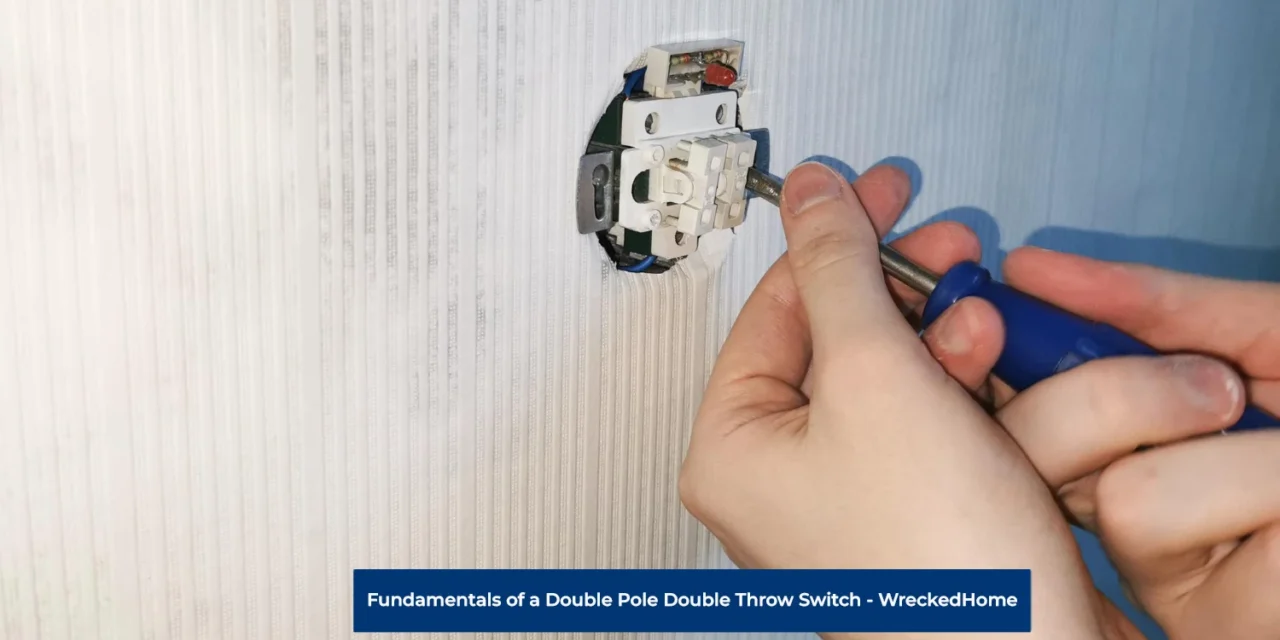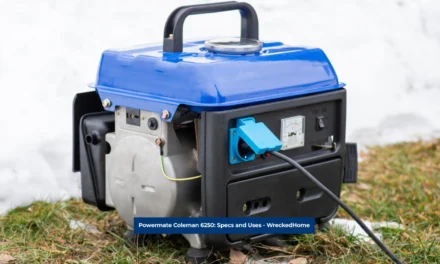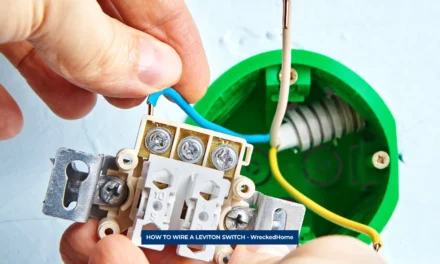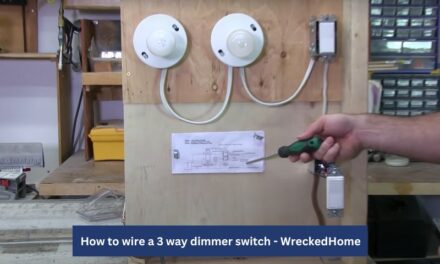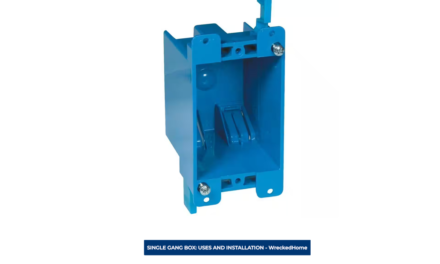Switches play a significant role in controlling the flow of electricity in electronic devices. They also assist the user to use them in a correct manner. There are various types of switches used in electronic devices. These include the following:
- Single Pole Single Throw (SPST)
- Single Pole Double Throw (SPDT)
- Double Pole Single Throw (DPST)
- Double Pole Double Throw (DPDT)
In this article, our focus will be on the fundamentals of a DPDT switch. What differentiates it from the rest is how the user can manage multiple circuits simultaneously while using it. We will throw light on how it’s constructed. We will also explore how it operates as well as where it’s used and how it facilitates the complex electrical configurations.
- Understanding The Double Pole Double Throw Switch (DPDT)
- Functioning Positions of a Double Pole Double Throw Switch (DPDT)
- Operation of a Double Pole Double Throw Switch (DPDT)
- Uses of Double Pole Double Throw Switch (DPDT)
- Wiring a Double Pole Double Throw Switch (DPDT)
- How to install a Double Pole Double Throw Switch (DPDT)
- Advantages and Disadvantages of a Double Pole Double Throw Switch (DPDT)
- Conclusion
- Frequently Asked Questions FAQs
Understanding The Double Pole Double Throw Switch (DPDT)
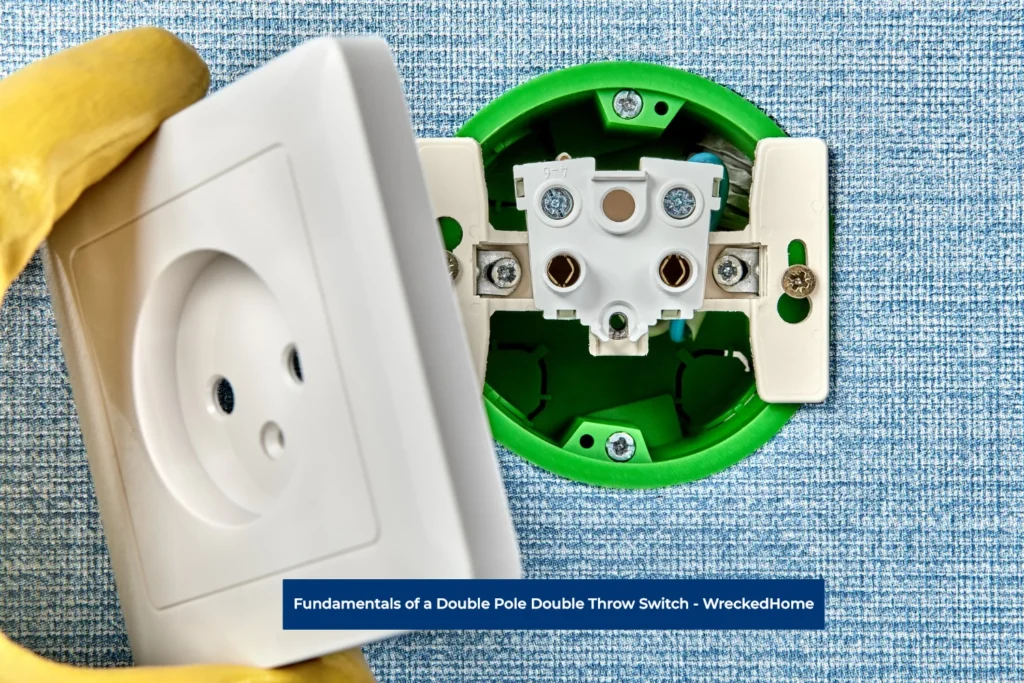
In order to understand the DPDT switch, it’s important to know how they are made and their anatomy. They consist of three parts which are explained in detail below:
- Poles: A DPDT switch has two poles hence its name “double pole”. This basically means that it controls two separate circuits.
- Throws: Each of the two poles have two positions. These are known as “throws”. In the case of the DPDT, these are called “double throws”. They provide versatility in circuit control as each pole is connected to one of the two terminals.
- Actuator: Thisis part of the switch. It is used externally to turn the switch off or on. It’s available in different forms such as a push button, toggle or a rocker.
Functioning Positions of a Double Pole Double Throw Switch (DPDT)
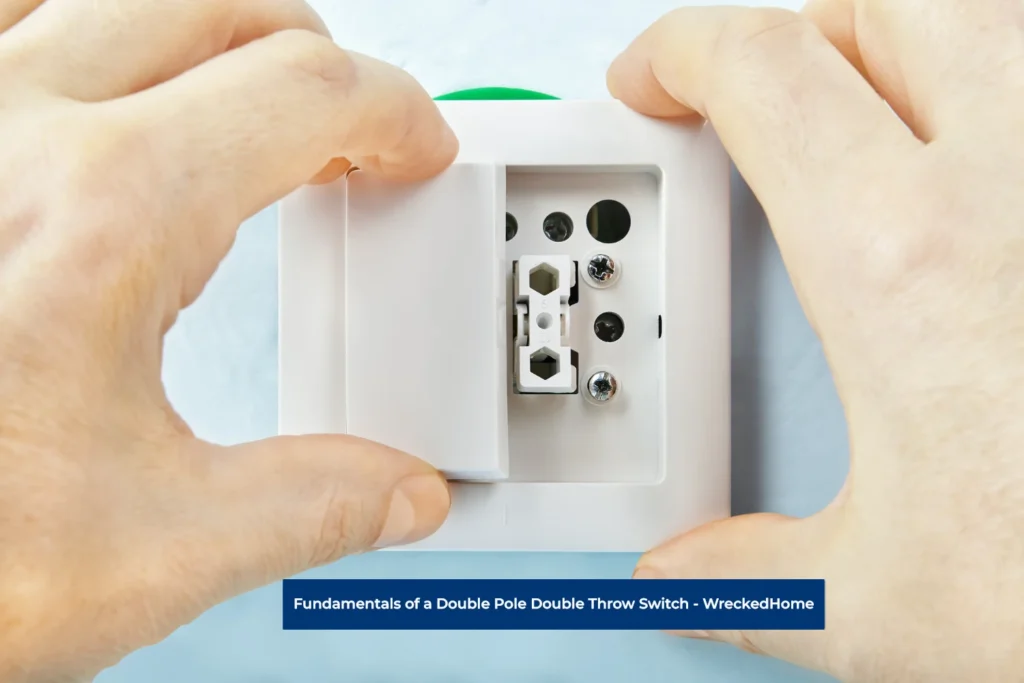
A DPDT switch consists of three positions that are mentioned below:
- Centre position – Off (CO): When the switch is set at the center it means that it disconnects both poles from any terminals. Hence, it turns off as no circuits are connected.
- 2. On Position 1 (ON1): In this position, the switch is pressed to connect it to the top terminals of both poles while leaving the bottom poles unconnected.
- On Position 2 (ON2): In this position, when pressed, the switch connects to the bottom terminals of both poles while leaving the top terminals unconnected.
The main purpose of the DPDT switch is to help control separate circuits or devices. At the same time, it helps to switch between them or reverse current flow. Therefore, the above mentioned switch positioning allows this to be achieved easily.
Operation of a Double Pole Double Throw Switch (DPDT)
In order to understand how a DPDT switch works we need to examine how it’s operated in different configurations:
- Basic DPDT Switch Operation: This is the basic way of using a DPDT switch. It allows you to choose between two separate circuits. To turn it on you need to press the switch to ON1 or ON2 position. To turn the switch off you should keep the switch in OFF (CO) position.
- DPDT Switch as a Reversing Switch: The DPDT switch has a primary purpose, which is as a reverse switch for electric motors. By toggling between ON1 and ON2, you can easily change the direction of the motor’s rotation.
- DPDT Switch in Parallel or Series Configurations: This switch can also be used to connect circuits in parallel or series configuration. However, this depends on the writing arrangement. In parallel configurations top terminals are connected and in series configuration, the bottom terminals are connected.
Uses of Double Pole Double Throw Switch (DPDT)
The DPDT switches are used for various appliances because of their ability to control multiple circuits at the same time:
- Guitar Electronics: DPDT switches are used in electric guitars to switch between different pick up combinations or tones.
- Household Appliances: Appliances like washing machines have DPDT switches, they control the direction of the motor for spinning clothes.
- Industrial Control Panels: In industrial control panels DPDT switches can control machinery and equipment that is complex. This can be achieved by switching between different modes.
- Audio Equipment: DPDT switches are used in audio equipment to switch between different output or input sources.
Visit our store for 10% off our Save Home Energy products here.
Wiring a Double Pole Double Throw Switch (DPDT)
Wiring of a DPDT switch may seem extremely complex at first. However, if you have a proper understanding of how it’s supposed to be wired along with its functionality then it becomes more manageable. Below is a brief guide of how a DPDT switch is wired:
- Identify the Terminals: It’s important to find the terminals that correspond to the poles, then you can operate your DPDT accordingly. The switch comes with a data sheet or diagram as a reference.
- Connect Circuits: If you want your circuit to be connected for basic use then it’s essential to connect the circuit to the correct throw terminal. However, ensure that the connections are insulated and secure.
- Center Off Position: Ensure that no circuits are connected in the OFF (CO) position. This is the center button.
- Test and Verify: After wiring your DPDT switch, it’s important to make sure that it performs the desired tasks on the chosen circuit ON1 and ON2. Also, ensure that it connects and disconnects to the circuit properly.
While we are talking about wiring, here’s an article on our website about 4 way switch wiring that you must read.
How to install a Double Pole Double Throw Switch (DPDT)
In order to install a DPDT switch, it’s important to first ensure that the power supply is turned off. This is necessary to avoid electrical hazards. Secondly, find a proper position for the switch where you can mount it accurately by drilling holes. Then you need to fix it tightly by using screws.
Make sure that the terminals on the switch are connected with the accurate wires. Once you’re done, confirm the position of the wiring on the data sheet or wiring diagram to make sure all the wiring is accurate.
You should also read our article about how to install a 3 way dimmer switch to give you a general idea about how this type of switch is installed.
Advantages and Disadvantages of a Double Pole Double Throw Switch (DPDT)
A Double pole double throw switch (DPDT) has several advantages and disadvantages, these are mentioned below:
Advantages:
- These switches can operate in different equipment in various conditions.
- DPDT switches are quite affordable for the use they give.
- These switches are versatile and flexible as two separate circuits can be controlled at the same time.
- They are easy to install and operate and can operate in different conditions.
Disadvantages:
- It requires more space in appliances than other switches because of their large size and extra pins.
- They have a more complex wiring than other switches and need full attention when installed.
Conclusion
The Double pole double throw switch (DPDT) is quite a helpful component for electronic circuits. It is due to its capacity of handling two circuits at one time which makes it necessary for different electronics.
It allows users such as electricians or engineers to control multiple circuits at one time, change operation mode, and reverse the direction of motors. It is essential to understand the basics of DPDT switches which includes their anatomy, operation, uses, and wiring methods. It allows its users to use them in a vast range of electronic projects making it an essential tool in electronics.
You can check out similar articles about different electronic devices on our website.
For any repairs, installations, builds, or questions; We recommend you to hire a professional. Find A Pro Near You Here!
Frequently Asked Questions FAQs
What does DPDT stand for in the electronic world?
DPDT stands for “Double Pole Double Throw”. It is used for a switch that has two poles and two throws. Hence, offering multiple options for circuit control.
What is the primary purpose of using a DPDT switch in a device?
The main and primary purpose of using a DPDT switch is so that it can control the flow of electricity in more than one circuit at a same time. This gives it an edge and makes it a versatile option for various uses.
Is it possible for a DPDT switch to reverse the direction of a motor?
Yes, the Double pole double throw switch (DPDT) is usually preferred for use in motors due to their ability to reverse its direction. You can do that by toggling between the two positions that are ON1 and ON2, it will change the direction of a motor’s rotation.
Are DPDT switches commonly used in household electronics?
Yes, DPDT switches are used in various household appliances and electronics. They include washing machines and audio equipment, where they control different operational modes or functions.
How do I wire a DPDT switch in series configurations?
Wiring a DPDT Switch in series configuration helps you connect the circuits in a sequence. Here’s how:
- Find the terminals by locating the two poles and two throws of the switch.
- Connect the top terminal of a pole to the bottom terminal of the other pole, this creates a series connection.
- For the remaining switch terminals, you can attach them to your circuits. This can be done by attaching the first circuit with the top terminal of the first pole and the second circuit to the bottom terminal of the second pole.
- In series configuration, the flow of electricity goes through the first circuit before the second. So by toggling to ON1 or ON2 it completes one circuit before activating the other.
How can I choose the right DPDT switch for my project?
While choosing a DPDT switch you should consider factors like the switch type, current and voltage ratings, and specific requirements according to your project.

